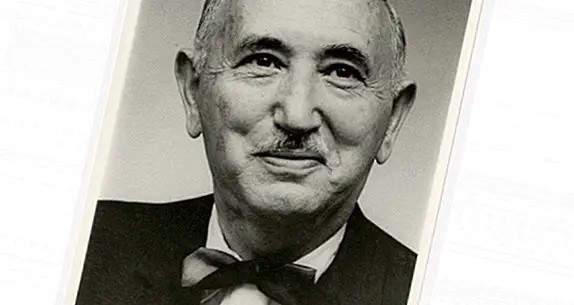American psychologist, inventor of intelligence tests: Who is David Wechsler?
He immigrated to the USA from Romania with his family when he was a child. Opposing the idea of an ideal mental age to measure individual success, he defined the normal intelligence level as the average intelligence level of all members of an age group.

David Wechsler (b. January 12, 1896, Lespedi, Romania - d. May 2, 1981, New York City, USA) was an American psychologist who was the inventor of widely used intelligence tests for adults and children.
He immigrated to the USA from Romania with his family when he was a child. He studied at the City College of New York and Columbia University. He completed his doctorate in 1925.
He served as head of the psychology department at Bellevue Hospital in New York for a long time (1932-67). During this period, he prepared a series of intelligence tests known as the Wechsler-Bellevue Intelligence Test (WIS), aimed at measuring the intelligence of adults for clinical use (1939).
David Wechsler (January 12, 1896 – May 2, 1981) was a Romanian-American psychologist. He developed well-known intelligence scales, such as the Wechsler Adult Intelligence Scale (WAIS) and the Wechsler Intelligence Scale for Children (WISC) to get to know his patients at Bellevue Hospital. A Review of General Psychology survey, published in 2002, ranked Wechsler as the 51st most cited psychologist of the 20th century.
Opposing the idea of an ideal mental age to measure individual success, he defined the normal intelligence level as the average intelligence level of all members of an age group.
He determined this average as 100 on a standard scale. A revised edition of the WIS, which quickly became the most common adult intelligence test in the United States, was published in 1942.
The Wechsler Child Intelligence Test (WISC), released in 1949, was followed by the Wechsler Adult Intelligence Test (WAIS) in 1955. In WAIS, which basically has the same structure as WIS, 10 percent of the sample was selected from non-whites in order to reflect the general population.
Wechsler, who last published the Wechsler Preschool and Primary School Intelligence Test (WPPSI) in 1967, revised the WAIS shortly before his death in 1981.
WISC-R (Wechsler Intelligence Scale for Children-Revised) is a standardized intelligence test designed to measure the cognitive abilities of children aged 6-16. This test was developed by psychologist David Wechsler in 1974 and revised in 1981.
The WISC-R consists of several subtests that measure different cognitive abilities, such as verbal comprehension, perceptual reasoning, working memory, and processing speed. The test is divided into two main parts: verbal and performance. While the verbal section consists of tests such as vocabulary, comprehension, and arithmetic, the performance section includes tests such as picture completion, block design, and object assembly.
WISC-R results are used to provide an intelligence quotient (IQ) score, which measures a child's intelligence level among peers. The average IQ score is 100, and scores higher than 130 are considered very high, while scores lower than 70 are considered very low.
